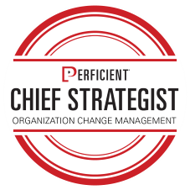My previous blog analyzed executive alignment in a change management initiative. This blog will highlight stakeholder management in a change management initiative and the benefit that comes with it.
 Stakeholder management is the lesser known brother of the organizational change management heavyweights: communications and training. This is the area we most often overlook or choose to invest the least amount of time. Why is that? In short, because it is hard. It takes time. It means reputations must be put on the line. It means risking rejection. People might ask us hard questions that we can’t answer. It scares us. All of that is true, but for us to be effective change practitioners, we must address it.
Stakeholder management is the lesser known brother of the organizational change management heavyweights: communications and training. This is the area we most often overlook or choose to invest the least amount of time. Why is that? In short, because it is hard. It takes time. It means reputations must be put on the line. It means risking rejection. People might ask us hard questions that we can’t answer. It scares us. All of that is true, but for us to be effective change practitioners, we must address it.
First, let’s define stakeholder management.
Business Dictionary defines stakeholder management as, ”The process of forming, monitoring, and maintaining constructive relationships with investors by influencing their expectations of gain resulting from their investment appropriately.”
Look at that again: To form, monitor and maintain constructive relationships. You can’t just do a stakeholder analysis at project inception and expect it to be valid throughout the project! People are dynamic. Their dispositions will change. He or she who was once a supporter of the project may have learned something concerning (real or not) that causes internal, or worse, external resistance.
A change manager must monitor and maintain these relationships to know when this is happening. This takes time and effort (as an aside, one of the casualties of de-scoping a change effort is the ability to perform this function). But without spending time with your stakeholders on a regular and periodic basis, how do you know when these things happen? How do you know what the concerns are so that they can be addressed?
When an issue is detected near its inception, the molehill is prevented from becoming a mountain. A few years ago, we did a project at a high-tech firm. We were implementing a state-of-the-art CRM solution, replacing a homegrown system that had been in place for more than ten years. At the project’s outset, everyone was excited to see the old system go. They couldn’t wait to get the new system up and running. They couldn’t wait to get into the 21st century.
However, during the project, people realized what the new system could do – and also what it wouldn’t. One-off, unique functions would be replaced by more streamlined, state-of-the-art functions. Unnecessary process and approval steps would be eliminated. Reporting, both in content and delivery, would look different. None of these would harm the business. In fact, they would improve the business. However, as people learned that their baby was going away, as ugly as it may have been, they got nervous and decided they didn’t like it.

These stakeholders went down the “J-curve” to what I like to call the “pit of despair.” The world was going to end. “As a stakeholder, I’m no longer supportive,” was a common phrase uttered to our team. However, we heard the phrase because we were in constant contact with our stakeholders. We listened. We partnered with them. With regular meetings, we knew when their dispositions went south, and we knew why.
Sometimes the concerns were legitimate, and we took that information back to the project team for corrective actions. Often, the concerns could be remedied with additional information to the stakeholder or by correcting bad information that came from a variety of sources. Either way, we kept the molehill from becoming a mountain.
None of this happens, though, if you don’t regularly connect with stakeholders. You need to create a cadence for checking in with your stakeholders, a cadence that may vary by stakeholder. At the end of the day, you’ll have your finger on the pulse of the organization, you’ll be able to read and react, and the dividends will pay off handsomely at go-live.
To learn more about the key concepts of change management and how to overcome challenges to achieve success, you can click here or download the guide below.

